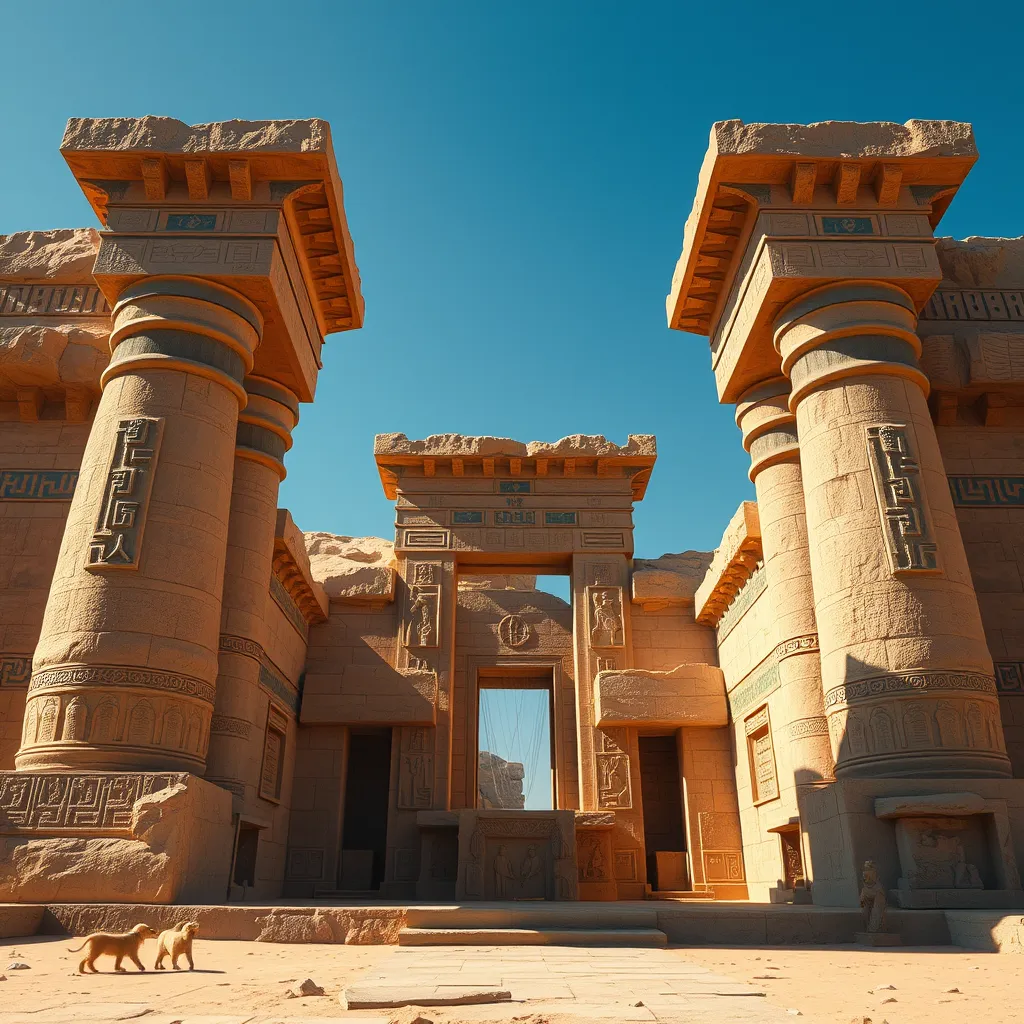The Duat: A Place of Healing and Reconciliation
I. Introduction
The Duat, in ancient Egyptian belief, represents the realm of the dead, a mystical landscape where souls journey after death. It holds profound significance as a place where the deceased undergo experiences of judgment, healing, and reconciliation. This article explores the themes of healing and reconciliation within the context of the Duat, emphasizing its importance in the ancient Egyptian worldview.
II. Understanding the Duat
A. Description of the Duat’s landscape and realms
The Duat is often depicted as a complex, multi-layered realm filled with rivers, fields, and various supernatural beings. Its landscape is not static; instead, it features:
- Darkness and light—symbolizing the duality of existence.
- Fiery regions representing purification through fire.
- Fields of reeds, echoing the Nile’s fertile banks, symbolizing rebirth.
- Obstacles and guardians that souls must navigate to reach their final destination.
B. The Duat as a journey rather than a destination
In ancient Egyptian belief, the Duat is perceived as a journey that the soul undertakes rather than merely a destination. This journey is filled with challenges, trials, and opportunities for growth, reflecting the soul’s need for transformation and healing. Each stage of the journey symbolizes a step toward achieving a harmonious existence in the afterlife.
III. The Role of the Duat in Ancient Egyptian Mythology
A. Key deities associated with the Duat (e.g., Osiris, Anubis)
Numerous deities inhabit the Duat, each playing a crucial role in the processes of death and rebirth. Key figures include:
- Osiris: The god of the afterlife, he symbolizes resurrection and eternal life.
- Anubis: The god of mummification and the protector of graves, overseeing the weighing of the heart.
- Thoth: The god of wisdom and writing, who records the results of the judgment.
B. Myths surrounding death, rebirth, and the afterlife
The myths surrounding the Duat often revolve around the themes of death and rebirth. The most famous is the story of Osiris, who was murdered by his brother Set and later resurrected by his wife, Isis. This myth underscores the cycle of life and death, illustrating how the Duat serves as a pathway to renewal.
IV. Healing in the Duat
A. The concept of spiritual healing and purification
Healing in the Duat is deeply intertwined with the idea of spiritual purification. Souls are believed to undergo various trials that cleanse them of impurities, allowing them to move closer to divine acceptance. This spiritual healing is essential for achieving a harmonious state in the afterlife.
B. Rituals and practices that facilitated healing in the afterlife
Ancient Egyptians performed specific rituals to aid the deceased in their journey through the Duat, including:
- Funerary rites that ensured the body was preserved for the afterlife.
- Recitations of spells from the “Book of the Dead” to guide and protect the soul.
- Offerings placed in tombs to sustain the deceased on their journey.
V. Reconciliation in the Duat
A. The importance of judgment and balance (Ma’at)
Reconciliation in the Duat is closely linked to the concept of Ma’at, which represents truth, balance, and order. Upon entering the Duat, the soul faces the judgment of Osiris, where its heart is weighed against the feather of Ma’at. This moment is pivotal for reconciliation, as it determines the soul’s fate based on its earthly deeds.
B. The journey of the soul and the significance of overcoming past transgressions
The journey through the Duat emphasizes the importance of confronting and overcoming past transgressions. Souls must navigate various challenges, symbolizing the need to reconcile their actions in life. This process fosters personal growth and understanding, ultimately leading to a state of unity with the divine.
VI. Symbolism of the Duat in Art and Literature
A. Representation of the Duat in tomb paintings and inscriptions
The Duat is vividly illustrated in tomb paintings and inscriptions, which serve both an artistic and a ritualistic purpose. These artworks often depict:
- Scenes of the deceased navigating the Duat.
- Deities who assist in the journey.
- Symbolic representations of the challenges faced in the afterlife.
B. Literary references to the Duat and its themes of healing and reconciliation
Literary texts, particularly the “Book of the Dead,” provide insights into the beliefs surrounding the Duat. These writings encapsulate the themes of healing and reconciliation, sharing the narratives that guide souls through their transformative journeys.
VII. Modern Interpretations of the Duat
A. Impact of the Duat on contemporary spirituality and healing practices
The concept of the Duat has influenced modern spiritual practices, particularly those focused on healing and personal growth. Many contemporary spiritual seekers draw parallels between the journey through the Duat and their own paths toward healing and self-discovery.
B. The Duat as a metaphor for personal growth and reconciliation in modern life
In a modern context, the Duat serves as a powerful metaphor for the internal struggles individuals face. The process of navigating one’s own ‘Duat’ can represent:
- Confronting fears and past traumas.
- Seeking forgiveness and reconciliation with oneself and others.
- Embracing transformation and renewal in life.
VIII. Conclusion
The Duat stands as a significant symbol of healing and reconciliation in ancient Egyptian belief. As a complex realm where souls undergo transformative journeys, it reflects timeless themes that resonate even in today’s world. The ancient perspectives on healing, judgment, and personal growth continue to influence contemporary spirituality, reminding us of the enduring legacy of the Duat in our quest for understanding and harmony.




